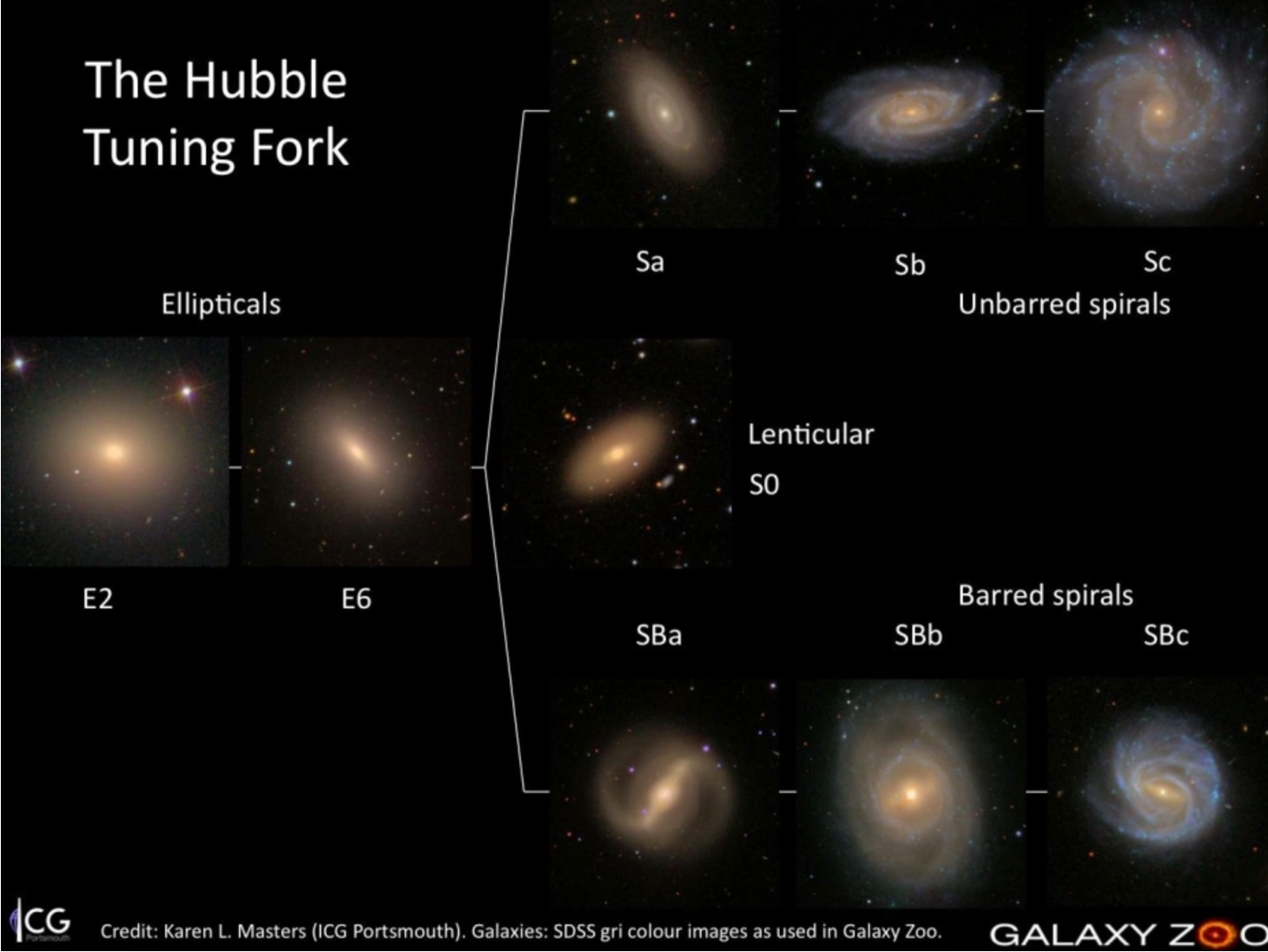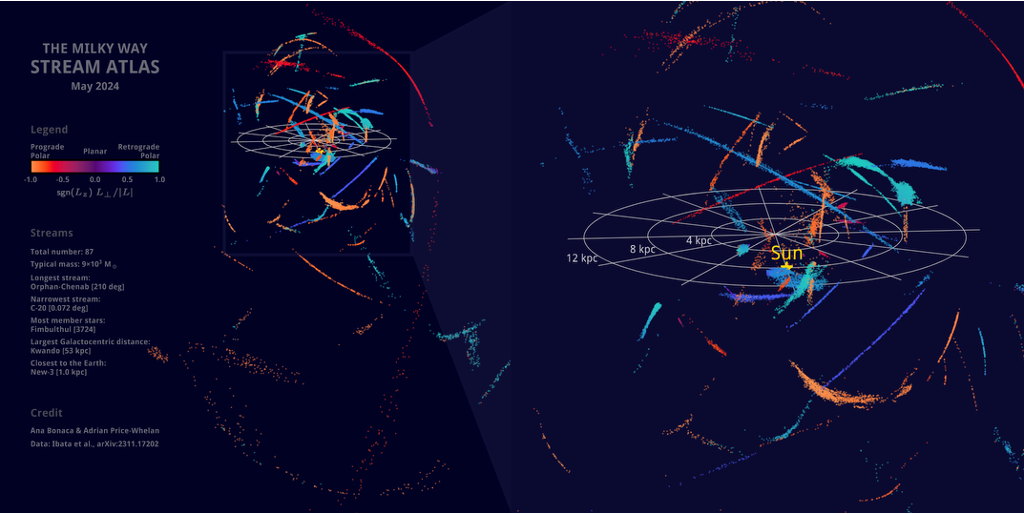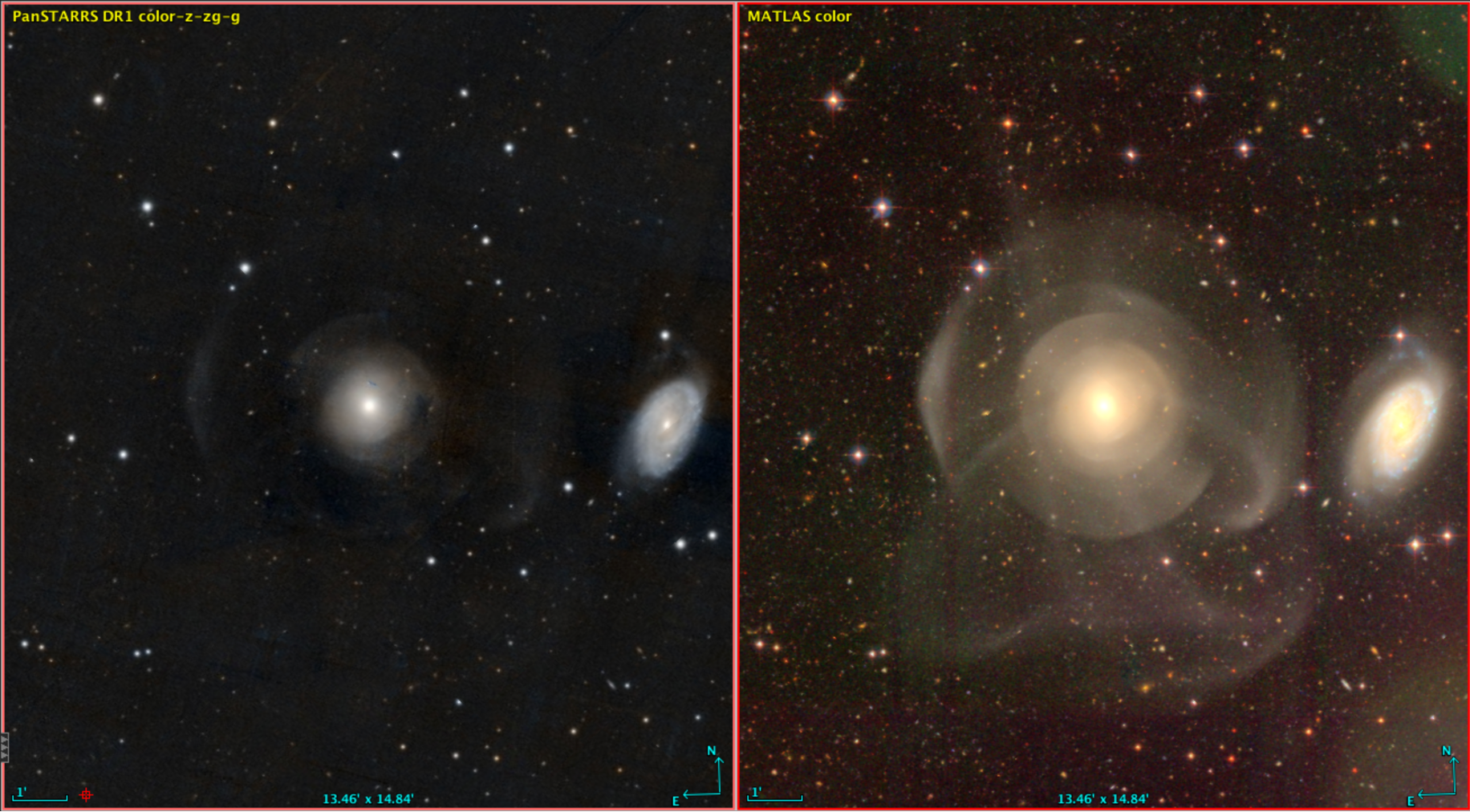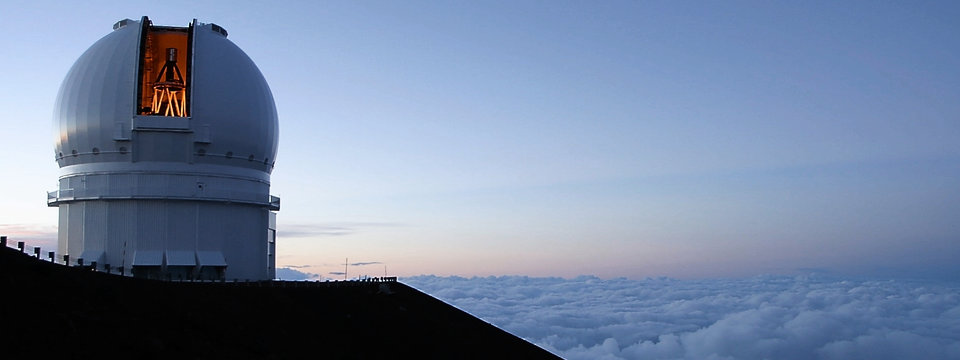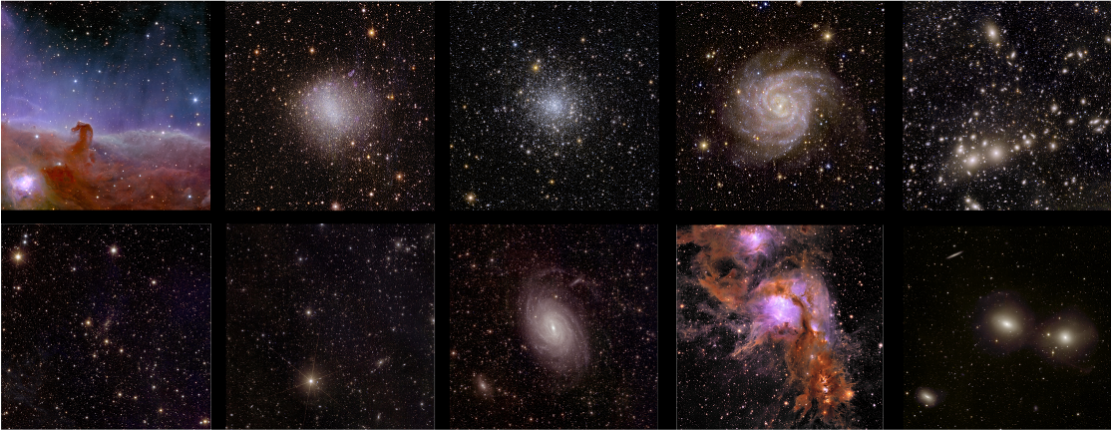My work
My goal is to detect and characterise these faint, diffuse tidal features
in the local Universe in order to unravel their late mass assembly history.
My focus is on focus on massive nearby galaxies. I study their tidal features not only
by looking at them (i.e. a census by visual inspection), but also by using quantitative methods to measure their properties.
Jafar
To that end, I contributed to develop and maintain an online annotation tool called Jafar,
that allows contributors to precisely delineate the shapes of tidal features in deep images.
The annotations (labels and coordinates of the contours) are stored in a database
that can then be queried to extract the properties of the tidal features,
such as their geometry, photometry and colour.
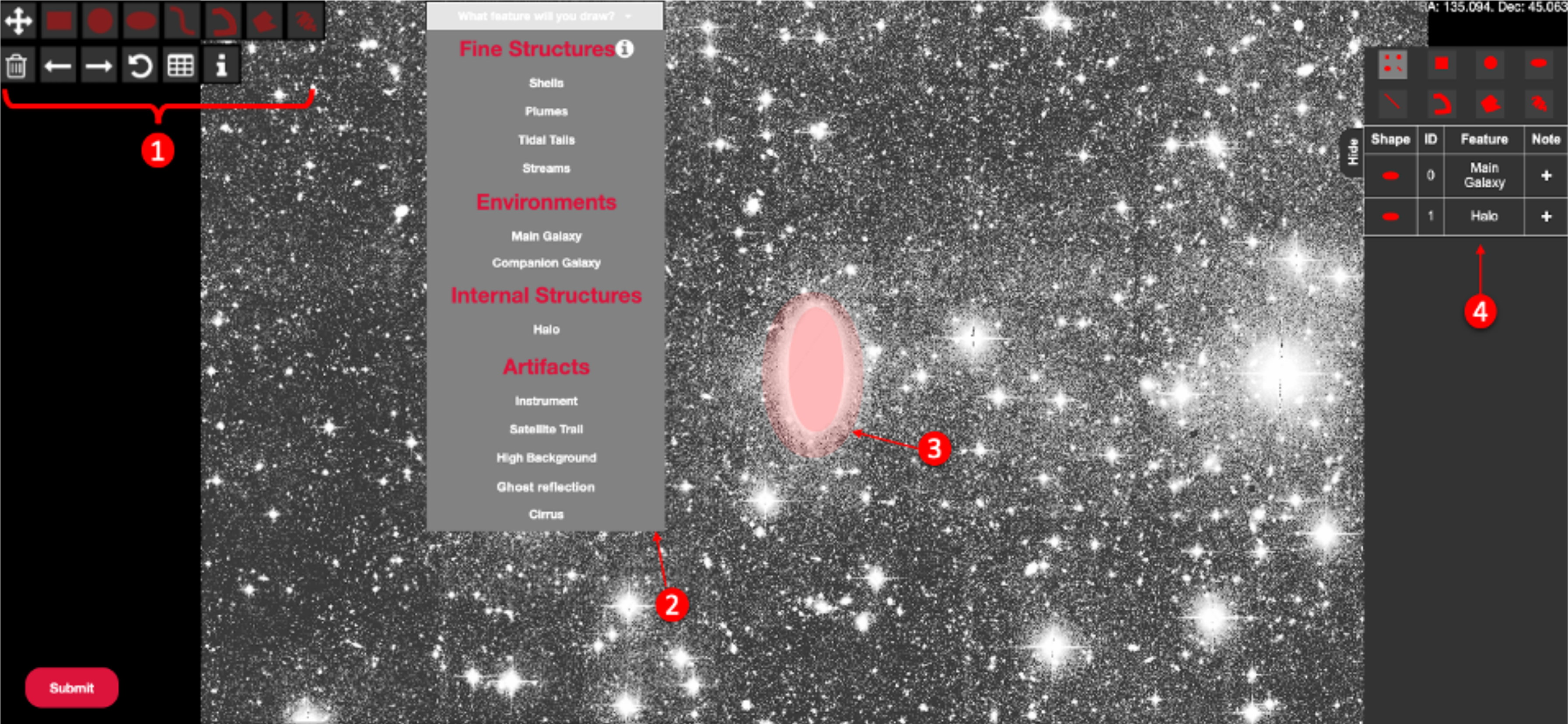 Annotation interface with its main facilities:
drawing buttons (label 1), classification menu (label 2), examples of already drawn annotations(label 3)
and summary table (label 4). © Sola et al 2022
Annotation interface with its main facilities:
drawing buttons (label 1), classification menu (label 2), examples of already drawn annotations(label 3)
and summary table (label 4). © Sola et al 2022
Why don't you try it out yourself ?
Jafar annotation sandbox
Recent work
In Sola et al 2022,
we present the Jafar tool and its first results on the annotation of tidal features
around 352 galaxies in the footprints of the CFIS/UNIONS and MATLAS surveys.
We extended this work to 475 galaxies in CFIS/UNIONS, MATLAS, NGVS and VESTIGE in
Sola et al 2025.
We investigated the effects of the host galaxy's properties and environment on the tidal feature properties.
Overall, 36% of the galaxies in our sample have tidal features, and we found a
strong correlation with the host galaxy's stellar mass.
Our annotation database can be used to train machine learning algorithms to
automatically segment tidal features in deep images. Indeed, manual annotation
is a time-consuming task, and automated method are required to scale up the analysis to larger samples,
such as the deluge of data from Euclid or Rubin.
A first attempt was carried out by Richards et al 2021
who developed a segmentation network trained on our database. This promising work is still ongoing.
I had the opportunity to work with the very first Euclid Early Release Observations (ERO) data.
I was involved in the search for dwarf galaxies in the Perseus cluster using Jafar in Marleau et al 2024,
where we found 1100 dwarf galaxy candidates, including 600 new discoveries.
I contributed to the analysis of tidal features in the ERO Dorado group field in
Urbano et al 2025,
to the study of the intracluster light in the ERO Perseus cluster in Kluge et al 2024,
and of some ram-pressure stripped galaxies in George et al 2025,
as well as some minor contributions to other Euclid papers.
With the release of the Euclid Q1 data, I was involved in the
semi-automated detection of dwarfs galaxies in Marleau et al 2025.
I am leading a project to search for tidal features in the Euclid Q1 data in
Sola et al 2025 (in prep.), in preparation for the Euclid Data Release 1.
Additionnally, stellar streams also offer insights on the dark matter distribution in galaxies.
In the Milky Way, where stars are individually resolved, streams can be used to
put strong constraints the dark matter halo properties.
However, recent work (e.g. Nibauer et al 2023)
have shown that streams in other galaxies, where the diffuse light is the only observable,
can also be used to some extent.
We followed up in Chemaly et al 2025 (in prep.) and showed with simulations
that we can actually recover the underlying distribution dark matter halo properties ('flattening').
The next step is to apply this method to a sample of galaxies with long, curved streams
suitable for modelling with this method.
Although we already had our annotation database, and some tidal features catalogues
from the literature, we were missing a large sample of suitable streams.
Therefore, in Sola et al 2025,
we classified about 20,000 galaxies from the DESI Legacy Imaging Survey (DESI-LS).
We used a combination of original images, models of all sources and residuals images
(i.e. images with all sources subtracted) to identify the streams.
We ended up with the 35 streams in our first release of the STRRINGS,
standing for STReams in Residuals of
Images of Nearby
GalaxieS that we characterised using Jafar.
Find out more in my publication list
